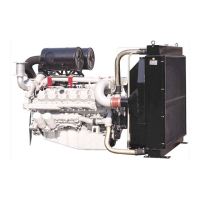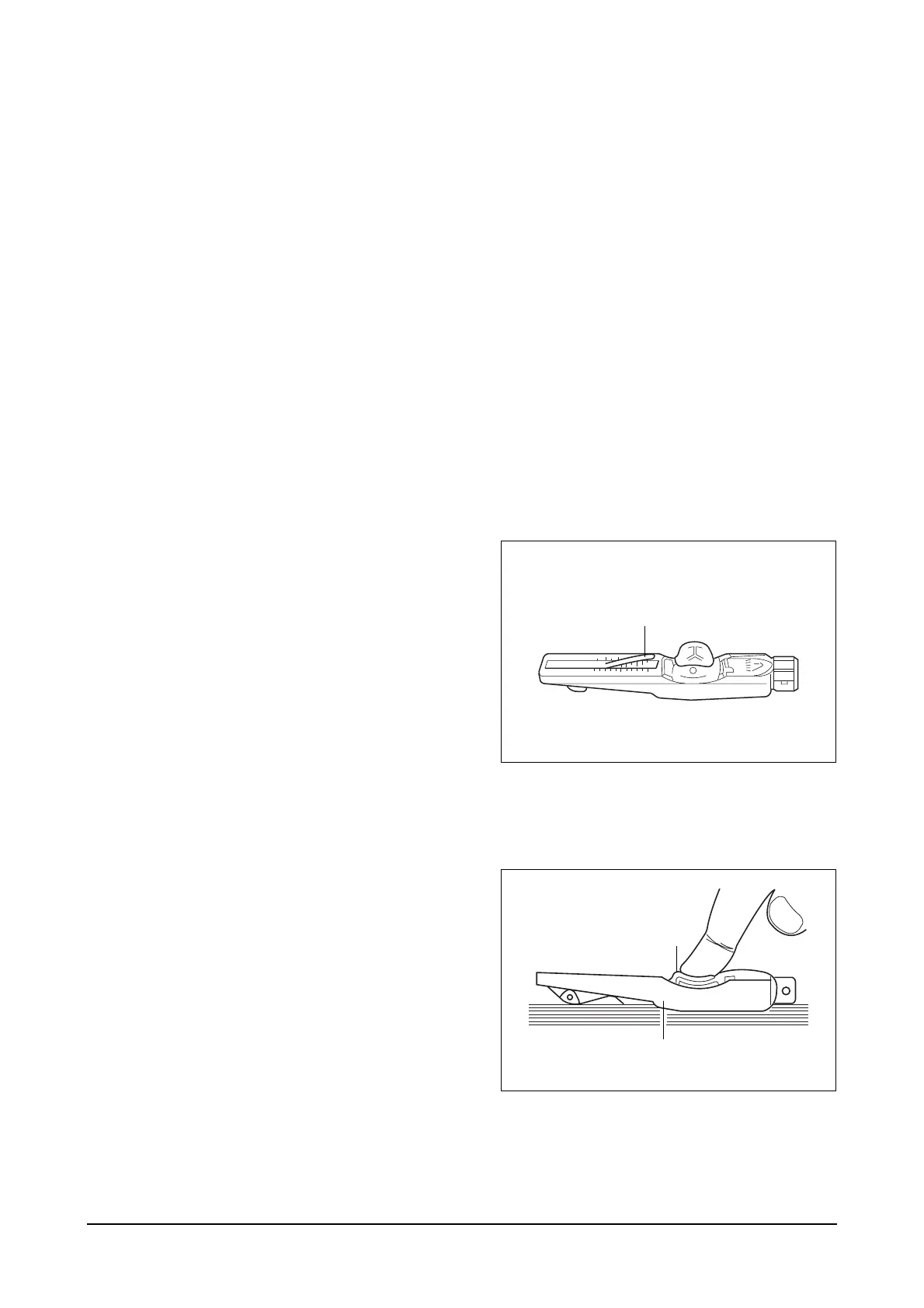Maintenance of Major Components
- 147 -
5.8. V-belts
The tension of the V-belts should be checked after every 2,000 hours of operation.
1) Change the V-belts if necessary
If in the case of a multiple belt drive, wear or differing tensions are found, always replace the complete
set of belts.
2) Checking condition
Check V-belts for cracks, oil, overheating and wear.
3) Testing by hand
The tension is correct if the V-belts can be pressed in by about the thickness of the V-belt. (no more
midway between the belt pulleys)
A more precise check of the V-belt tension is possible only by using a V-belt tension tester.
4) Measuring tension
①
Lower indicator arm (1) into the scale.
z
Apply tester to belt at a point
midway between two pulleys so that
edge of contact surface (2) is flush
with the V- belt.
z
Slowly depress pad (3) until the
spring can be heard to disengage.
This will cause the indicator to move
upwards.
If pressure is maintained after the
spring has disengaged a false reading
will be obtained!
②
Reading of tension
z
Read of the tensioning force of the
belt at the point where the top
surface of the indicator arm (1)
intersects with the scale.
z
Before taking readings make
ensure that the indicator arm
remains in its position.
1
EA6O6011
3
2
EA6O6012

